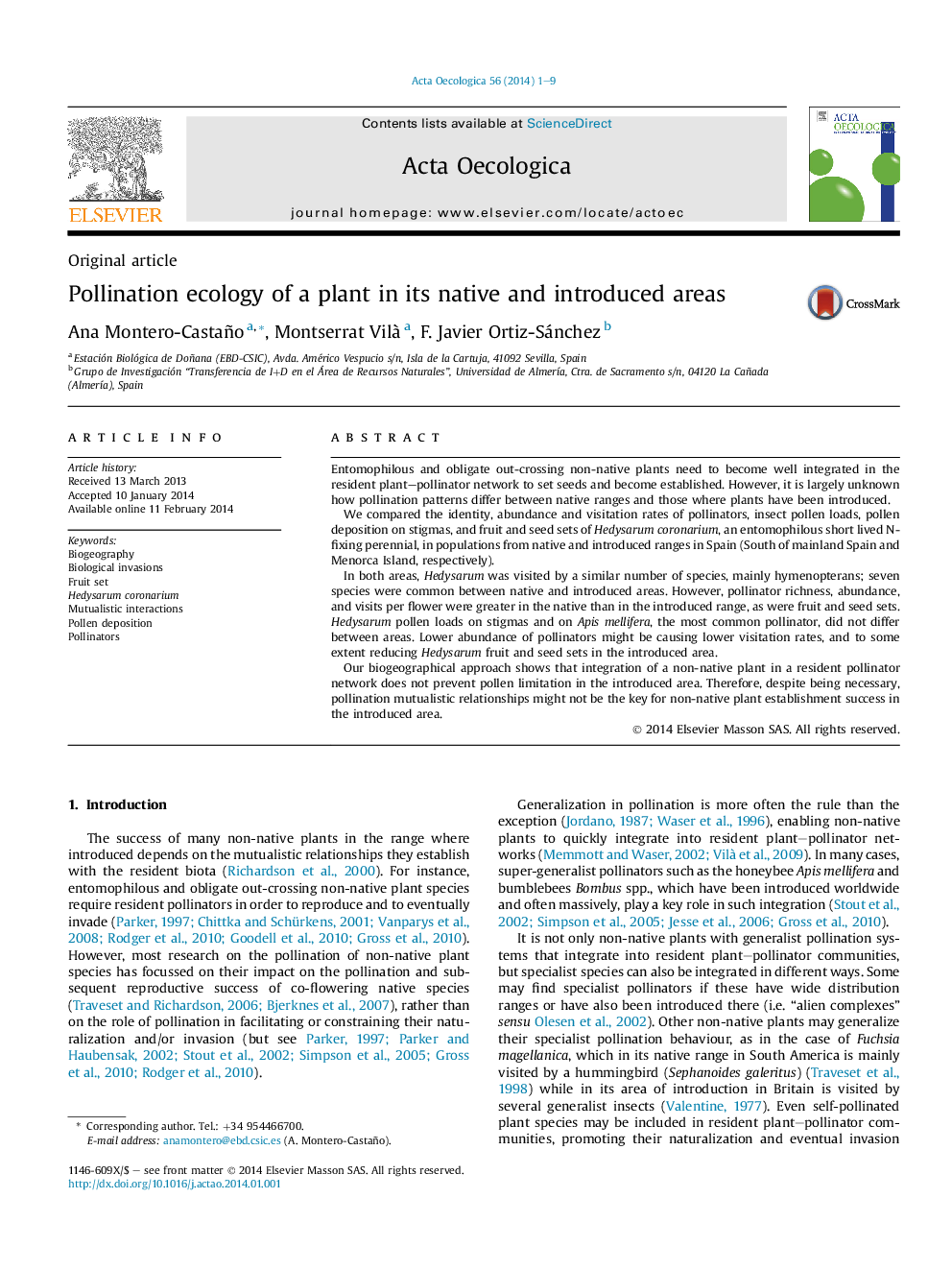| Article ID | Journal | Published Year | Pages | File Type |
|---|---|---|---|---|
| 4381020 | Acta Oecologica | 2014 | 9 Pages |
•We studied the pollination of a non-native plant in its native and introduction areas.•We found introduced populations to be pollen limited despite similar pollinator richness.•Mutualistic relationships though necessary might not be the key for invasion success.
Entomophilous and obligate out-crossing non-native plants need to become well integrated in the resident plant–pollinator network to set seeds and become established. However, it is largely unknown how pollination patterns differ between native ranges and those where plants have been introduced.We compared the identity, abundance and visitation rates of pollinators, insect pollen loads, pollen deposition on stigmas, and fruit and seed sets of Hedysarum coronarium, an entomophilous short lived N-fixing perennial, in populations from native and introduced ranges in Spain (South of mainland Spain and Menorca Island, respectively).In both areas, Hedysarum was visited by a similar number of species, mainly hymenopterans; seven species were common between native and introduced areas. However, pollinator richness, abundance, and visits per flower were greater in the native than in the introduced range, as were fruit and seed sets. Hedysarum pollen loads on stigmas and on Apis mellifera, the most common pollinator, did not differ between areas. Lower abundance of pollinators might be causing lower visitation rates, and to some extent reducing Hedysarum fruit and seed sets in the introduced area.Our biogeographical approach shows that integration of a non-native plant in a resident pollinator network does not prevent pollen limitation in the introduced area. Therefore, despite being necessary, pollination mutualistic relationships might not be the key for non-native plant establishment success in the introduced area.
